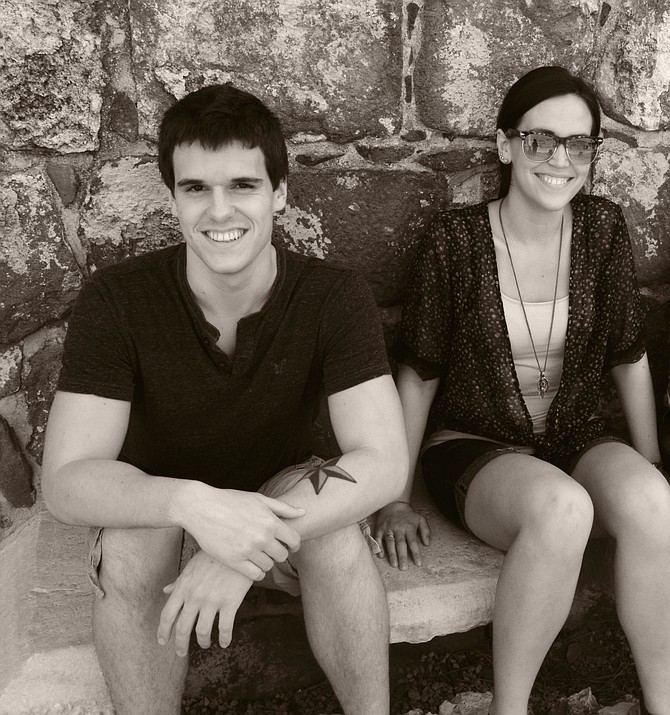This is the third in a series of articles on opioid addiction in Arlington County.
Ginny Atwood Lovitt remembers her 12-year-old brother Chris would bring her breakfast in bed — scrambled eggs, toast, coffee, jam in those little jars. "He would go all out to make people happy. At Thanksgiving, when everyone was in a coma after dinner, he would rub their back, as if you could feel any better."
But she says his really soft heart made him vulnerable to all the pain in the world, to a deep feeling of depression. In his early teens he started experimenting with different drugs, "but we didn't really know. He was mostly acting normal." She says he got in trouble a couple of times when he attended high school in Arlington, "but he was a zany, funny person and we thought he was just being wild and crazy Chris."
"I don't think my parents or I knew at all until he got addicted in 2007 to heroin at 15. He was losing weight rapidly and his sleeping schedule was off. That's the first sign." Lovitt said Chris was acting sullen so her mother looked around his room and found a syringe. He had taped it on the inside of the amp for his electric guitar.
Lovitt said it took a while to really admit it. "He was in and out of treatment places for six years. He would be in a period of recovery and then relapse. He was in six different places, considered to be top notch. But they didn't get it."
The programs were abstinence based — spend two weeks or a month, basically in detox and "send you on your way. Don't do that again." Lovitt said, “Now we know it takes three months at a bare minimum and up to a year." She said, "My parents did a lot of research. We just didn't know. And they didn't have enough family support."
She says Chris ended up on medically assisted treatment, which is considered the gold standard today, but back then there was a stigma. Lovitt says Chris was doing really well with Suboxone and was able to go back to school and finish. He was going to the gym every day.
"Unfortunately, while there is marginally more support for medically-assisted treatment today, there is still a prevailing stigma against these medications in the 12-step recovery plan — that you don't count, that you wouldn't fully fit in until you went off these medications your doctor recommended. That was deadly for someone like Chris who was just figuring out life and trying to enter the career world. So he went off his medication early and he died less than two months later."
In 2013, Lovitt started the Chris Atwood Foundation in Northern Virginia to save lives from opioid addiction and support recovery. She said, “We know a lot more but if we look at it, it is embarrassing, the slow progress." Lovitt has been working to eliminate the barriers to distribution and availability of Narcan, the only drug known to be effective in recovery of opioid overdose victims. She has been active in getting legislation enacted in the Virginia General Assembly, has equipped 3,000 people to reverse overdoses and has gone out on the streets to find people at high risk. "Addicts don't put a training session on their calendars three weeks in advance." But she said, "How slow progress moves."
